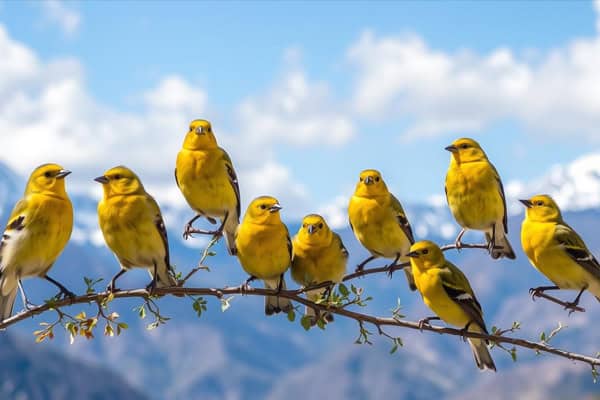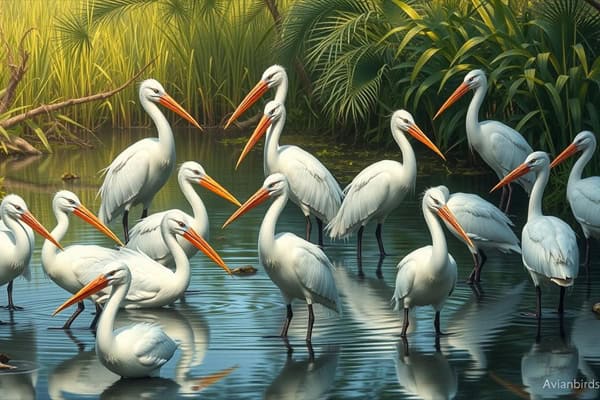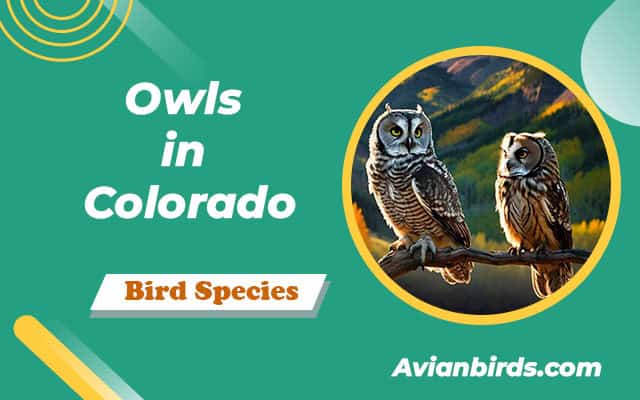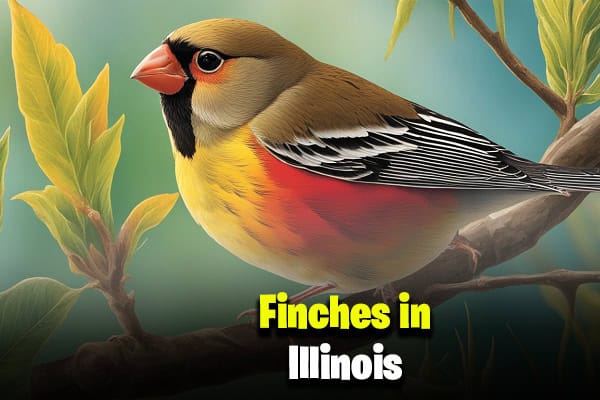12 Beautiful Yellow Birds in Colorado (With Pictures)
Did you know Colorado has over 500 birds, with nearly 20 of them showing off bright yellow feathers? This makes birdwatching in Colorado a unique experience, especially for those who love beautiful yellow birds. We’ll look at twelve stunning yellow bird species found in the state. You’ll get engaging descriptions and tips for spotting and observing them.
Let’s explore the world of these colorful birds together. They’re great for both experienced birdwatchers and those just starting out. We’ll cover their unique traits, where they live, and how they act. This will help you on your next bird photography trip in Colorado.
Common Yellow Birds in Colorado
- American Goldfinch
- Wilson’s Warbler
- American Yellow Warbler
- Yellow-Rumped Warbler
- Nashville Warbler
- Evening Grosbeak
- Yellow-Breasted Chat
- Magnolia Warbler
- Yellow-headed Blackbird
- Western Kingbird
1. American Goldfinch
- scientific name: Spinus tristis
- Size: (11 to 13 cm)
- Weight: (11 to 20 grams)
The American Goldfinch (Spinus tristis) brightens Colorado’s landscapes with its cheerful presence. These birds add a splash of bright yellow to gardens and parks. They are a favorite among those who enjoy birdwatching.

Identifying Characteristics
It’s easy to spot the American Goldfinch by its unique features. Adult males shine with vibrant yellow feathers in summer. They have a black cap and black wings, making them stand out.
Female goldfinches are less bright, with a softer yellow color and no cap. In winter, both males and females turn pale brown or olive, blending in with their surroundings.
Habitat and Nesting Behavior
American Goldfinches live in weedy areas and gardens full of seeds. They love feeders made for smaller birds, making our gardens welcoming to them. They build their nests in shrubs or trees, using materials to make strong homes.
Their nesting habits are interesting. They nest when seeds are plentiful, ensuring their young have enough food early on.
2. Wilson’s Warbler
- scientific name: Cardellina pusilla
- Size: (11 to 12.7 cm)
- Weight: (5 to 10 grams)
Wilson’s Warbler Yellow birds of Colorado (Cardellina pusilla) is a small, vibrant bird that catches our eye with its unique look and behavior. It’s a great chance to learn about its special traits and interesting ways of mating.
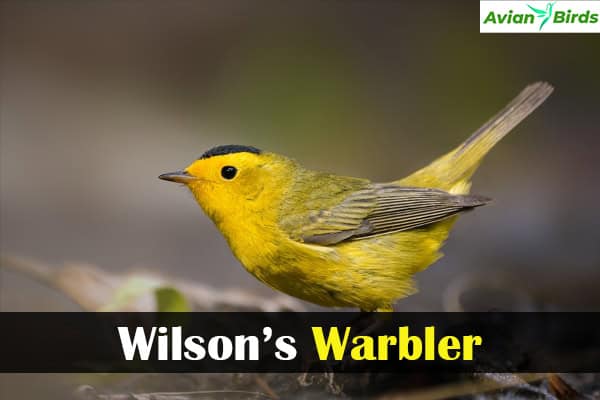
Identifying Characteristics
It’s easy to spot Wilson’s Warbler because of its bright features. It’s about 3.9 to 4.7 inches long and weighs between 0.2 to 0.3 ounces. The males have a greenish-yellow body and a black cap. This makes them stand out from other warblers.
Seeing them in the wild is a treat, especially during migration. They add a splash of color to the foliage.
Behavior and Mating Rituals
The way Wilson’s Warbler mates is quite unique. Males sing a bright song that gets louder as mating season goes on. This song is a sign of their lively nature.
They’re not like other warblers; they prefer to live and nest near the ground. They like dense shrubbery for these activities. This shows us how they live in the wild.
During migration, males get very active and vocal. It’s a joy for those who love nature to watch them.
| Characteristic | Details |
|---|---|
| Size | 3.9-4.7 inches |
| Weight | 0.2-0.3 ounces |
| Male Coloration | Greenish-yellow body with a black cap |
| Nesting Preference | Near the ground in dense shrubbery |
| Mating Song | Bright and clear, more intense during mating season |
3. American Yellow Warbler
- Scientific name: Setophaga petechia
- Size: (12 to 13 cm)
- Weight: (9 to 11 grams)
The American Yellow Warbler (Setophaga petechia) is a beautiful sight in nature. It stands out with its bright colors and unique behaviors. Birdwatchers and nature lovers find it fascinating.

Identifying Characteristics
This bird is about 4.7 to 5.1 inches long and weighs 0.3 to 0.4 ounces. Its bright yellow color makes it easy to spot in the wild. It also has light chestnut streaks on its chest, making it even more recognizable.
Also, They live in moist forests, especially where willow trees grow. They are known for their active nesting habits. Furthermore, They defend their nests against intruders like the Brown-headed Cowbird. They also build multiple nests to keep out unwanted eggs.
4. Yellow-Rumped Warbler
- Scientific name: Setophaga coronata
- Size: 4.7 to 5.5 inches (12 to 14 cm) in length
- Weight: 0.4 to 0.5 ounces (12 to 14 grams)
The Yellow-Rumped Warbler is a bird that catches the eye of both experts and beginners in nature. It’s known for its bright colors and varied behaviors. This makes it a great bird to spot in different places.
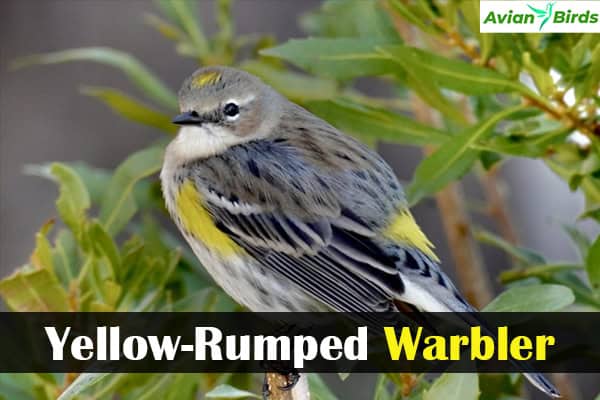
Identifying Characteristics
This bird stands out with its size, measuring 4.7-5.5 inches long and weighing 0.4-0.5 ounces. It has a gray body and a black chest. The yellow patches on its rump and under the wings are easy to see. These features help us distinguish it from other similar birds.
Feeding Habits
The Yellow-Rumped Warbler changes its diet with the seasons. In warmer months, it eats insects for protein. When winter comes, it eats seeds and berries. This shows how it can adapt to what’s available.
We often see these birds looking for food in trees or on the ground. They search for food in many types of places.
| Characteristic | Description |
|---|---|
| Size | 4.7-5.5 inches |
| Weight | 0.4-0.5 ounces |
| Coloration | Gray body with black chest and yellow patches |
| Common Diet | Insects in summer; seeds and berries in winter |
5. Nashville Warbler
- Scientific name: Leiothlypis ruficapilla
- Size: 4.3 to 5.1 inches (11 to 13 cm) in length
- Weight: 0.3 to 0.4 ounces (7 to 11 grams)
The Nashville Warbler, known scientifically as Leiothlypis ruficapilla, is a favorite among birdwatchers. It stands out with its unique look and actions. This small bird is about 4.3-5.1 inches long and weighs 0.2-0.5 ounces.
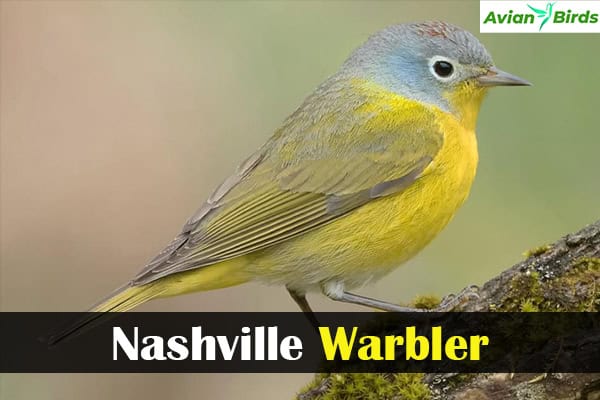
Its bright yellow underside contrasts with a gray top and a distinctive gray hood. This makes it easy to spot in different places.
These birds often travel in groups during migration, showing they like to be together. They live in areas with shrubs, young forests, and woodland edges. These places give them shelter and food.
One interesting thing about their nests is they use porcupine quills. This shows how creative and adaptable they are in using what they find.
Related Video:
6. Evening Grosbeak
- Scientific name: Coccothraustes vespertinus
- Size: 6.3 to 7.1 inches (16 to 18 cm) in length
- Weight: 1.9 to 2.6 ounces (53 to 74 grams)
The Evening Grosbeak Yellow Birds in Colorado is a standout among woodland birds with its bright look and special eating habits. It’s often seen in northern forests but visits Colorado when it’s cold. Its big size and bright colors grab the eye of bird lovers and those just passing by.

Identifying Characteristics
Looking for the Evening Grosbeak, we see key features. Adults have a big, strong beak perfect for opening hard seeds. Their feathers are mostly yellow, with black and white on the wings and head. This bright look makes them easy to spot and sets them apart from other birds.
Preferred Feeding Sites
The Evening Grosbeak likes certain places to eat. They go to backyard feeders, especially for sunflower seeds. They’re good at finding food in places made by humans. Often, they sit on feeders, showing off their skill with their strong beaks. They like areas near pine forests and open woods, which are great for finding food.
7. Yellow-Breasted Chat
- Scientific name: Icteria virens
- Size: 6.7 to 7.5 inches (17 to 19 cm) in length
- Weight: 0.8 to 1.1 ounces (23 to 31 grams)
The Yellow-Breasted Chat is a bright spot for bird lovers and nature fans. It has an olive-gray back and a bright yellow belly. This medium-sized bird is about 7.1 inches long and weighs 0.8 to 1.1 ounces. Its unique look makes it stand out in Colorado’s bird world.
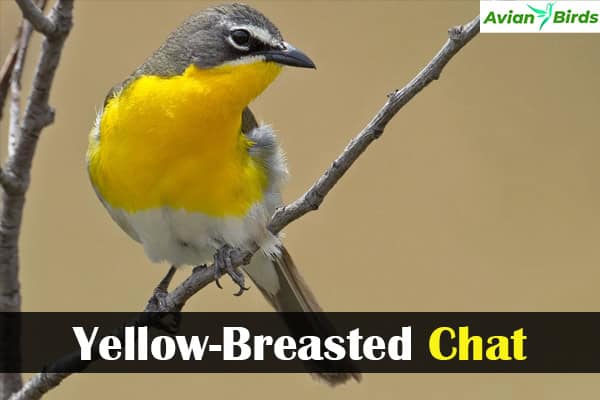
Spotting these chats requires patience since they are shy. In spring, their songs become louder, making them easier to find. Their songs are like music, drawing us to the thickets where they live.
Knowing where they live helps us appreciate them more. Yellow-breasted chats like to nest in dense shrubs and thickets. They pick spots with lots of leaves for cover. This makes finding them a fun challenge.
| Feature | Description |
|---|---|
| Length | 7.1 inches |
| Weight | 0.8-1.1 ounces |
| Coloration | Olive-gray back, bright yellow underparts |
| Nesting Preference | Dense shrubs and thickets, often brambles |
| Vocalization | Distinctive calls, more prominent during spring |
8. Magnolia Warbler
- Scientific name: Setophaga magnolia
- Size: 4.3 to 5.1 inches (11 to 13 cm) in length
- Weight: 0.2 to 0.5 ounces (6 to 13 grams)
The Magnolia Warbler (Setophaga magnolia) is a standout among Colorado’s vibrant yellow birds. It’s known for its striking look and unique behaviors. This species captures the hearts of birdwatchers and nature lovers. Let’s dive into what makes it so memorable.
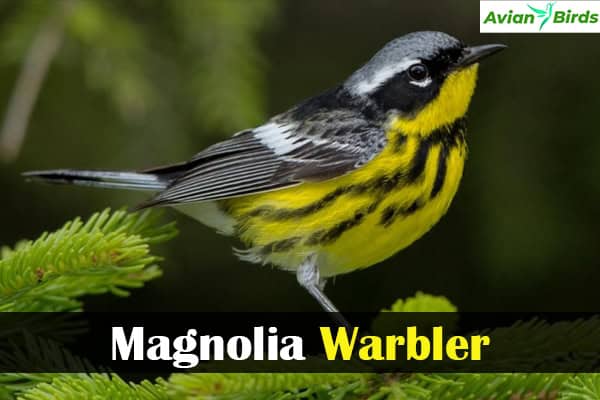
Identifying Characteristics
The Magnolia Warbler is about 4.3 to 5.1 inches long and weighs 0.2 to 0.5 ounces. Males show off bold black and yellow patterns. Females have softer colors. Their distinctive stripes across their bodies are a key way to tell them apart.
These stripes add to their beauty and help them blend in with their surroundings. This camouflage is crucial for survival in the underbrush.
These yellow birds in Colorado migrate to southern areas in the winter and back to northern habitats for breeding. Watching their breeding habits gives us a peek into their life cycle. It’s why they’re so popular among birdwatchers. Seeing a Magnolia Warbler with its bright plumage and lively behavior is unforgettable.
| Feature | Male Magnolia Warbler | Female Magnolia Warbler |
|---|---|---|
| Size | 4.3 – 5.1 inches | 4.3 – 5.1 inches |
| Weight | 0.2 – 0.5 ounces | 0.2 – 0.5 ounces |
| Coloration | Bold black and yellow | Softer yellow and gray |
| Distinctive Markings | Black streaked back | Subtle streaks |
| Migration | Winter in southern regions | Winter in southern regions |
9. Yellow-headed Blackbird
- Scientific name: Xanthocephalus xanthocephalus
- Size: (21 to 26 cm)
- Weight: (44 to 100 grams)
The Yellow-headed Blackbird catches our eye with its bright colors and unique behaviors. It’s known for its bright yellow head and breast against a black body. Males are 8.3-10.2 inches long and weigh 1.6-3.5 ounces. These physical features make them stand out among blackbirds.
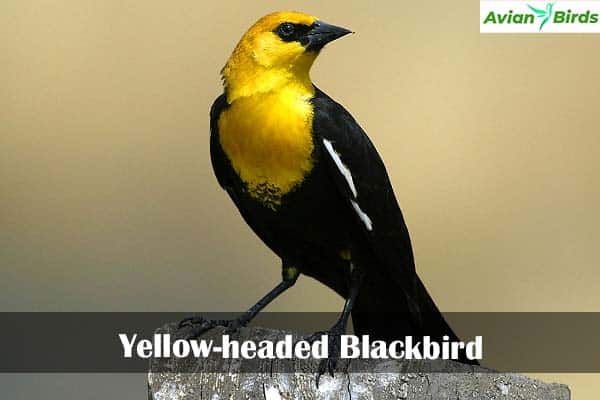
Identifying Characteristics
Male Yellow-headed Blackbirds are easy to spot with their bright yellow heads and chests. Their black wings and tails contrast with the yellow, making them look stunning. In the breeding season, their colors get even brighter, making them easy to distinguish from females, who have less vibrant colors.
Nesting Habits
Yellow-headed Blackbirds have interesting nesting habits. They prefer wetlands with lots of cattails and reeds. Females build the nest over water among the reeds, which protects it from predators. In groups, they live with other blackbirds, forming a social structure to find the best nesting spots.
10. Western Kingbird
- Scientific name: Tyrannus verticalis
- Size: (20 to 24 cm)
- Weight: (37 to 46 grams)
The Western Kingbird (Tyrannus verticalis) is a bird we often see in open areas of Colorado. It’s about 7.9 to 9.4 inches long and weighs 1.3 to 1.6 ounces. It has a solid gray head and a bright yellow belly. These features make it easy to spot for birdwatchers and nature lovers.

We usually see them near fences or power lines, where they like to perch. They have a special way of catching insects. They watch for insects in the air and then fly after them from their perch. This shows how agile and sharp they are, making them interesting to watch.
| Attribute | Details |
|---|---|
| Length | 7.9 – 9.4 inches |
| Weight | 1.3 – 1.6 ounces |
| Coloration | Gray head, bright yellow belly |
| Feeding Technique | Flycatcher strategy |
| Common Habitat | Open areas, near fences or power lines |
Exploring the Western Kingbird shows us more about this colorful bird. Its unique traits and how it hunts make it special in our world.
Check Our Previous Articles:
| Black Birds in Michigan |
| Owls in Indiana |
| Learn About the White-Naped Crane |
| Mandarin Duck: Everything You Need To Know |
| Demoiselle Crane | A Guide |
Final Thoughts
The beauty and diversity of yellow birds in Colorado make the state’s landscapes more vibrant. From the American Goldfinch’s enchanting songs to the Yellow-headed Blackbird’s striking look, each bird offers a unique chance to explore. This summary shows how these birds are important to the ecosystem and delight birdwatchers.
Knowing how to birdwatch in Colorado is key when we go into the wild. Having good binoculars and field guides with us makes the experience fun and educational. Seeing these beautiful birds in nature connects us deeply with Colorado’s beauty.

